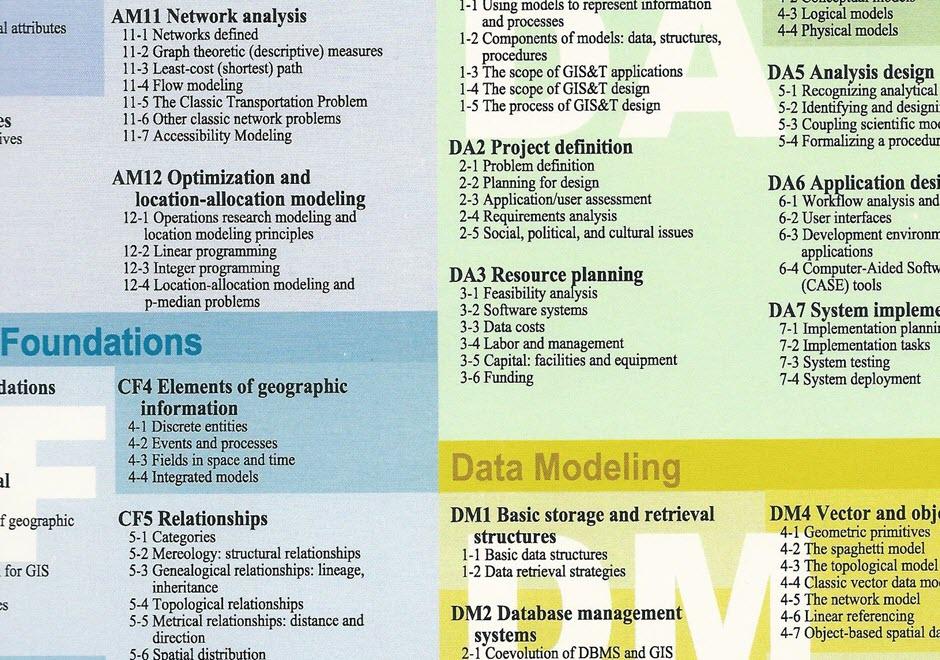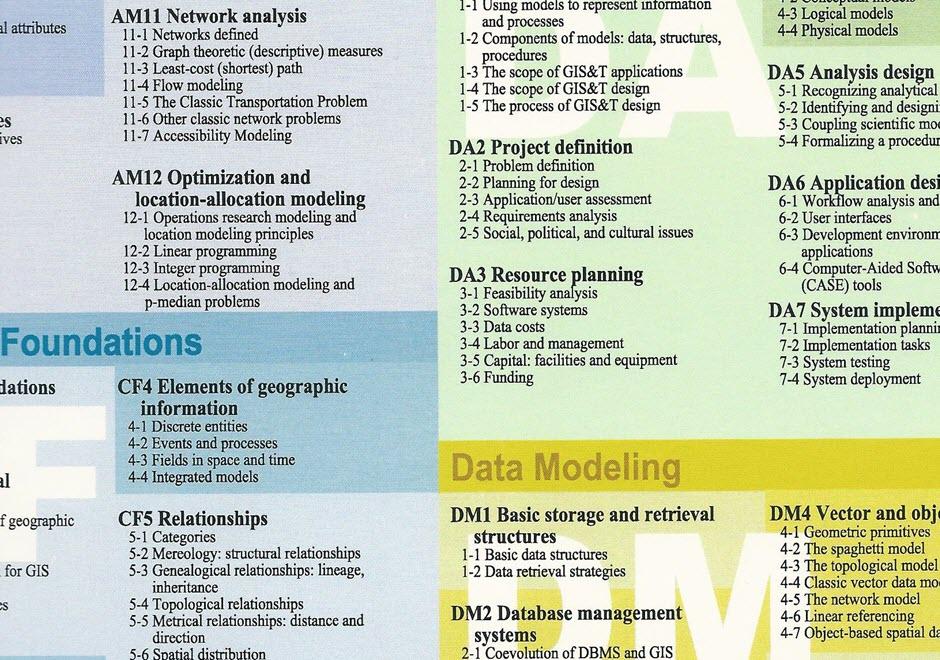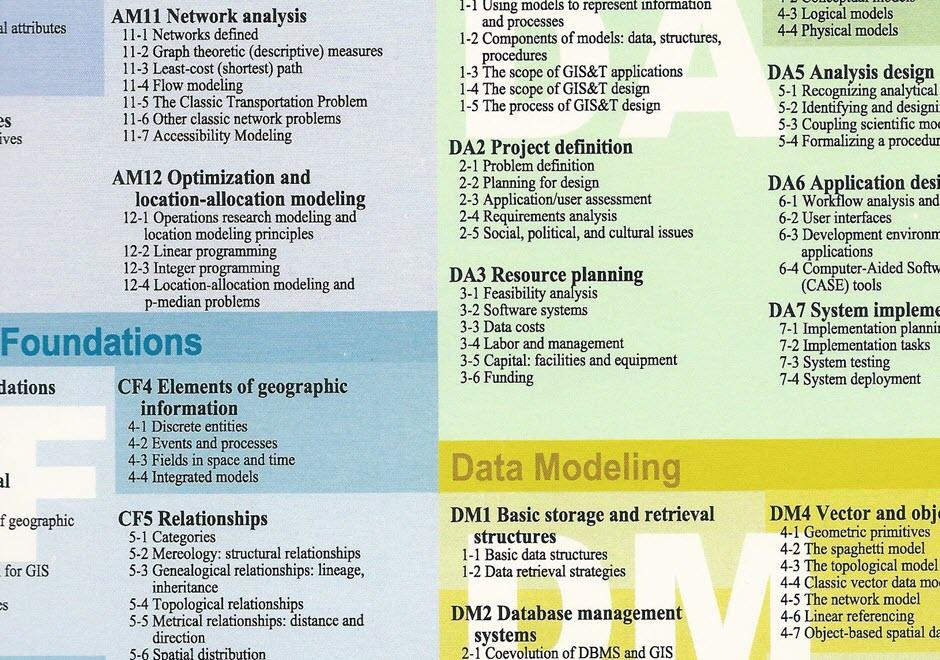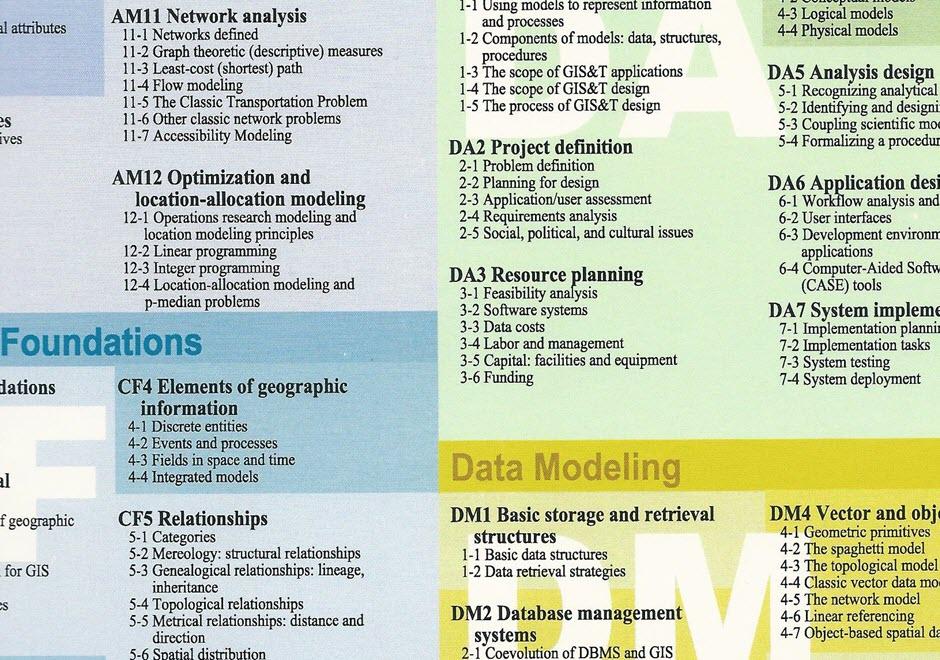DM-62 - Database administration

- Describe how using standards can affect implementation of a GIS
- Explain how validation and verification processes can be used to maintain database integrity
- Summarize how data access processes can be a factor in development of an enterprise GIS implementation
- Describe effective methods to get stakeholders to create, adopt, or develop and maintain metadata for shared datasets






KE-21 - System Modelling for Effective GIS Management
A geographic information system in operation is highly complex, as the scope of the GIS&T Body of Knowledge demonstrates. Modern society relies on many complex systems, but most are self-contained mechanisms with limited and well defined interfaces. A GIS is a complex open system that extends across the realms of hardware, software, data, science, and human processes. A conceptual model of a GIS can be an effective tool to design, implement, operate, maintain, manage, and assessment tool.